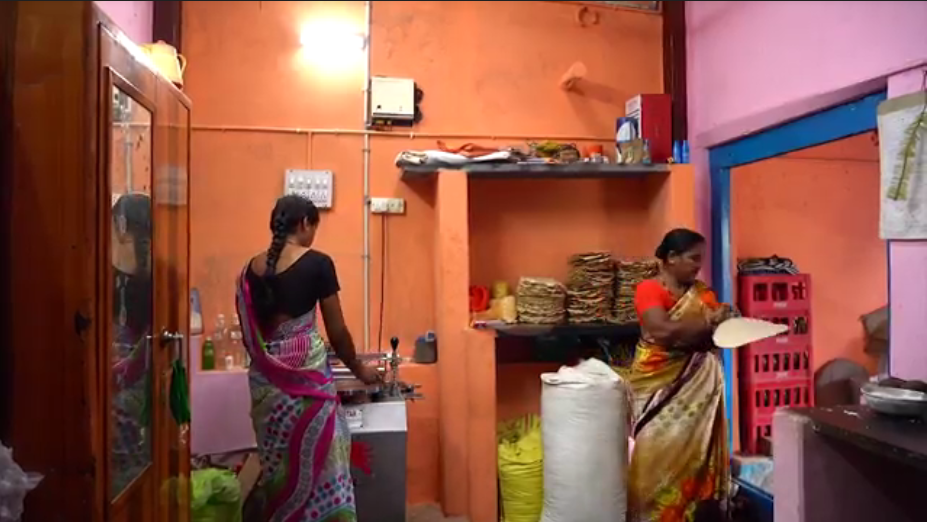Background
Paravva is a home-based roti making entrepreneur in Dharwad with a small petty shop. Her workspace, before the intervention, was roofed by a metal sheet and had no means of proper ventilation. Due to this, her workspace would get extremely hot during the afternoons and the summer months. The internal heat of her workspace were worsened by the presence of an active heat source ‘the chulha or cookstove’ that was always on during production. This also caused the space to be filled with smoke due to the lack of openings. The lack of openings also meant that the illumination level from natural lighting was low due, to which electric lighting was switched on for 12 to 16 hours per day.

Efficient Workspace Layout
The layout of the space was modified to allow for better flow and efficiency, hygienic storage, improved ventilation and lighting.

Efficient Roofing System
To reduce radiant heat from the roof, an insulated roof was installed. To promote ventilation within the space, a turbo-ventilator was installed above the cooktop. This provided efficient exhaust for the smoke and heat. The combined interventions reduced temperatures by 5-7℃ from the outdoor temperature and the air quality was improved from unhealthy levels to safe limits. By providing a skylight, daylight could enter the space during the working hours, which increased the illuminance levels of the space and optimised energy usage to a point where no lights were used during day time.

Scope for Expansion
The improved workspace helped her in increasing her business. She was able to expand her space and add a khanavali (restaurant) which boosted her business further.
Integrated Renewable Energy for Ease of Work
By installing a solar powered roti machine in her workspace, Paravva has been able to double her production of rotis and increase her business significantly.
Learnings
The renovation of Paravva's workspace shows that by incrementally improving on certain aspects of a space, such as the roof and working layout, the costs of implementation can be kept low while the impacts felt by the end-user are immense. This can help them flourish and grow their businesses.
Pre Intervention scenario
Paravva was struggling to work during the afternoons and the summer months due to extreme heat. The internal temperatures of her workspace would rise up to 38℃ to 40℃ due to the tin sheet roofing that canopied her home, the low ceiling and the lack of openings like windows for ventilation. The temperature is further raised by 3 to 5℃ by the presence of an active heat source, the cook stove used to make the rotis. This would prevent her from working a good 4-5 hours in the day due to the uncomfortable situation in a small 100 sq ft area. Additional fatigue was caused by poor adaptation of a home into a workspace. Due to the lack of proper storage, all the rotis she used to produce would be stacked on the floor. The cook stove was kept on the floor that would result in poor posture and back strain.
"After the construction of the new roof, we feel so comfortable within the space that we don’t feel the weather outside anymore. It always feels good to be in the house to work. The turbo ventilator has, also, made our job easier by providing adequate ventilation and heat exhaust (over the cooking stove)."
Paravva Budikatti
Roti Making Entrepreneur, Dharwad
Impact
Due to the built environment interventions done, Paravva was able to work during the hot hours of the afternoons and the summer months. This increased her average number of working hours from 5 hours to 9 hours per day, increasing her monthly income from around INR 12,000 to around INR 32,000.
Due to the income increase, she was able to grow her business and eventually expand to having a khanavali (restaurant) in front of her workspace.
